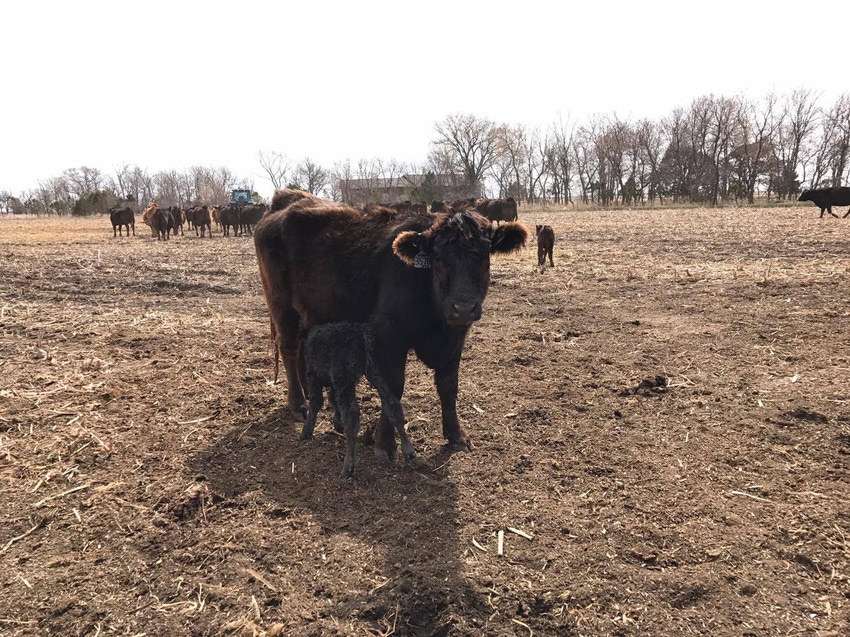4 tips for using CIDRs to move up late calvers
What’s the best method for moving late calving cows up in the breeding season? Consider these tips to tighten your calving window.
April 18, 2017

The breeding season is just around the corner. There’s nothing quite like springtime on the ranch, and it won’t be long until we’re artificially inseminating cows and moving pairs to summer grass.
Ranchers are always looking ahead, and the decisions we make today will impact our 2018 calf crop. With a goal of producing a uniform calf crop each year, maintaining a small window of calving can increase profitability and allow for better marketing options of the calf crop.
However, it takes a few extra management steps to keep the calving window tight, and it seems like there’s always a few cows that lag behind for one reason or another. These late-calving cows don’t have to be destined for the cull pen. There are strategies producers can implement to move late-calving cows up in the breeding season for the following year.
Bethany Johnston and Jay Jenkins, University of Nebraska-Lincoln Extension beef educators, suggest using CIDRs (a progesterone device) to stop late calvers from dragging out the calving season each year.
Here are four considerations for using CIDRs this breeding season:
1. Insert the CIDR no sooner than 20 days after calving
According to Johnston and Jenkins, “In order for a CIDR to work, the uterus must shrink back to its original size for reproduction to occur. Recovery takes time;imagine something holding a 90 pound calf needing to shrink to the size of a volleyball. Trying to ‘jump start’ the cycle with a CIDR too early after calving could result in less-than-desired pregnancy results.”
2. Using CIDRs for natural breeding
They suggest, “If you plan to use natural service breeding, insert a CIDR for 7 days, then remove the CIDR on day 7, and give an injection of prostaglandin. Bulls can be immediately placed with the cows. There is no need for extra bulls, a bull to cow ratio of 1:25 should be sufficient. However, all bulls should have a breeding soundness exam by a veterinarian. Young bulls may require special attention and a higher bull to cow ratio.”
3. Tips for CIDRs and artificial insemination (AI)
“Since the CIDR will synchronize estrus you could also use AI,” write Johnston and Jenkins. “If you choose to AI, you need to add a GnRH injection at the CIDR insertion, leave the CIDR in for 7 days, and inject prostaglandin when you remove the CIDR. If you plan to AI, it would be worth your time to look over the different estrus synchronization protocols or visit with your AI representative or Extension educator. Choose a system that works best for you. Any of the 7-day CIDR protocols will ‘jump start” the estrus cycle. The ‘recipe’ for each system should be followed exactly; no guessing or giving late injections!”
4. Cows need a body condition score of 5+
They advise, “Cows should be in good condition, a body condition score of 5 or greater at the time of calving, and maintaining or gaining weight after calving through breeding. Cows maintaining or gaining weight are more likely to conceive and sustain a pregnancy than cows losing weight.”
To read additional tips, click here.
The opinions of Amanda Radke are not necessarily those of beefmagazine.com or Penton Agriculture.
About the Author(s)
You May Also Like





